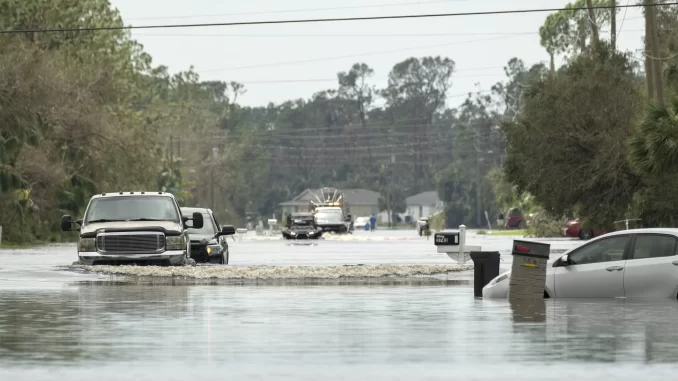
By Hank Russell
A recent report from the New York State Comptroller’s office found that Suffolk led all counties in being impacted by the greatest number of severe weather events.
Based on the National Oceanic and Atmospheric Administration (NOAA) Storm Data, between 1996 and 2024, Suffolk County had the highest number of severe weather events with 1,751, ahead of Saratoga (1,677), Herkimer (1,574), Ulster (1,528) and Albany (1,492) Counties. Nassau County was 22nd in the state with 899 severe weather events, according to NOAA Storm Data.
Stony Brook University’s School of Marine and Atmospheric Sciences has found that Long Island’s geography makes it particularly vulnerable to storm surges and high winds. Some of the highest elevation areas of the Island are found to be relatively safe, while the low-lying coastal towns face “extreme risk.” This risk analysis is borne out by NOAA Storm Data and data on payments from the National Flood Insurance Program (NFIP).
Between 1978 and 2024, Long Island counties were among the top counties in the state experiencing impacts from Stafford Act declared disasters and emergencies. During this period, Suffolk was named in 36 disaster and emergency declarations while Nassau was named in 31 declarations. (The Stafford Act ensures the provision of federal assistance to state and local governments during times of disaster.)
The report also examined the number of insured properties on Long Island and the monies paid out. Based on data from the Federal Emergency Management Agency (FEMA) and NFIP, Nassau and Suffolk Counties were the top two recipients of NFIP payments from 1978 to 2024. Nassau received over $2.28 billion, which accounted for 39.8% of NFIP payments that went to the state; Suffolk received more than $1.11 billion, or 19.4% of the state’s NFIP payouts.
In 2025, Long Island property owners also had the most NFIP policies with 25.1% of insured New York properties being in Nassau County and 18.0% in Suffolk. Property values in Nassau County are some of the highest in the state and both counties have relatively large populations, which may explain the high value of claims paid, according to economic data from the Federal Reserve Bank of St. Louis.
Last year, Nassau’s home price index was at 280.33, up from 261.30 the previous year, according to Federal Reserve Economic Data (FREDⓇ) using U.S. Federal Housing Finance Agency data. Suffolk’s home price index was at 299.76 in 2024, higher than 2023’s figure of 273.63. (The housing price index tracks the changes in the average price of residential properties sold in a particular area over time.)
The Comptroller’s office offered some recommendations on how to deal with extreme weather events. “[G]iven the experience with severe flooding events, both State and local officials should give serious consideration to planning for protecting lives and properties at existing development in flood plains and to limit further development or reconstruction of homes in these areas,” the report stated.
“New York State businesses, municipalities, State government and residents are currently facing significant costs to harden buildings, infrastructure and other vital assets to prevent damage from increasingly severe weather events,” the report continued. “As subway stations, roadways, homes and businesses continue to flood, the timeliness of these investments and their capacity will determine the extent to which the State can mitigate increasing damage to property and loss of life.”

